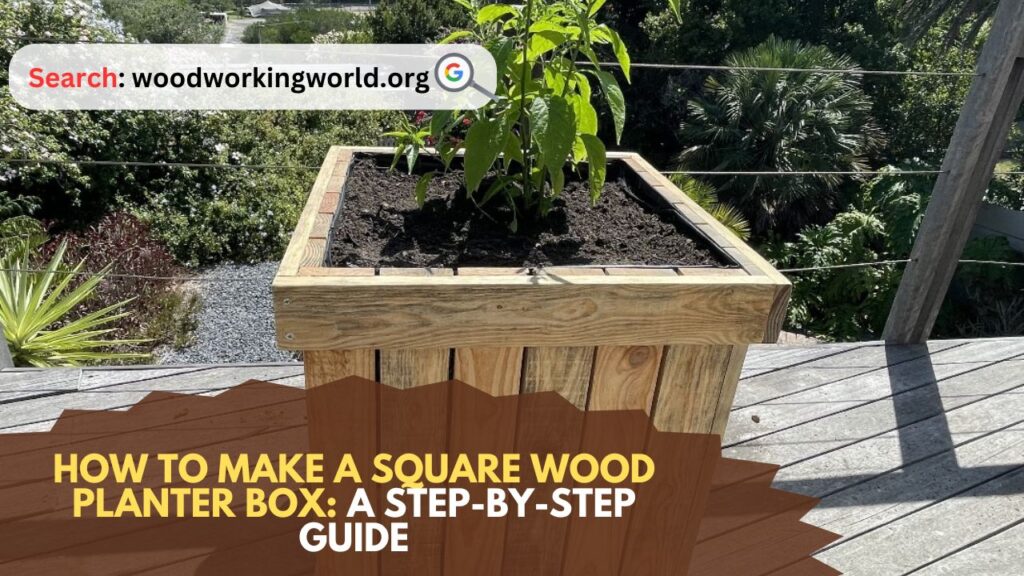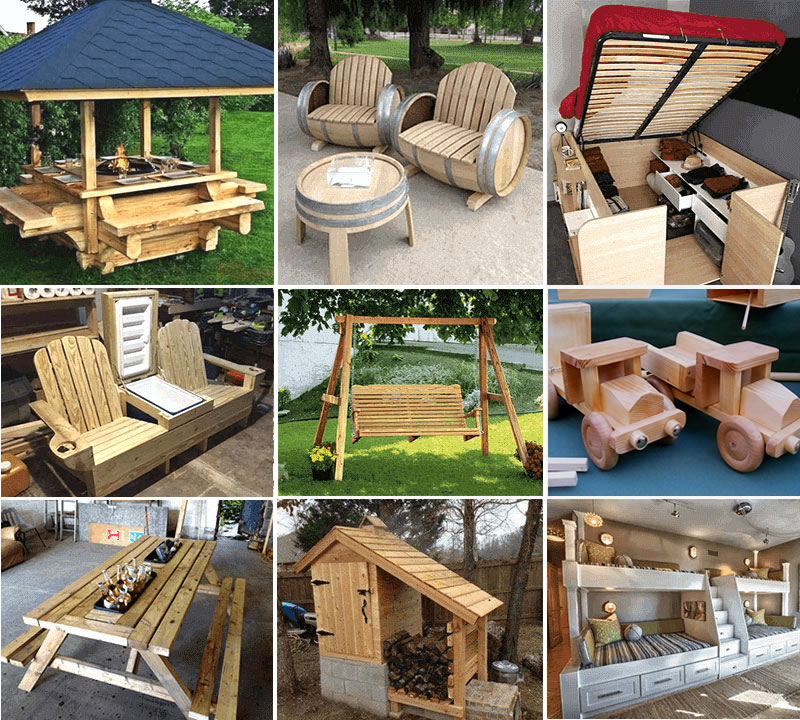How to Make a Square Wood Planter Box: A Step-by-Step Guide
Square Wood Planter Box: Creating your own square wood planter box is a rewarding woodworking project that combines both aesthetics and functionality. A planter box can be used to grow flowers, herbs, or even small vegetables, adding beauty and greenery to any space. In this guide, we’ll walk you through the process of making a square wood planter box, from selecting materials to final assembly. Whether you’re a seasoned woodworker or a novice, this project is perfect for enhancing your skills.

👉 Click here to unlock 16,000+ DIY woodworking plans now
How to Make a Square Wood Planter Box
Materials and Tools Needed
Before starting the project, gather all the necessary materials and tools:
Materials
- Wood: Choose a durable wood like cedar or redwood, which are naturally resistant to rot and insects. For a standard planter box, you will need:
- Four pieces of wood for the sides (1×6 or 1×8 boards work well)
- One piece of wood for the bottom (use a thicker piece like 1×12)
- Optional: wood trim for decorative edges
- Wood screws or nails: 1 1/2 to 2 inches in length
- Wood glue
- Sandpaper: Medium and fine grit
- Exterior wood stain or paint
- Landscaping fabric or plastic liner (optional, for lining the inside)
- Drainage rocks or small pebbles
Tools
- Measuring tape
- Pencil
- Square ruler or carpenter’s square
- Saw: Hand saw, miter saw, or circular saw
- Drill and bits
- Hammer (if using nails)
- Clamps (optional, for holding pieces together)
- Paintbrushes or rags (for staining or painting)
- Safety goggles and gloves
Step-by-Step Instructions
Step 1: Measure and Cut the Wood
Start by determining the size of your planter box. For this guide, we’ll create a planter box that is 12 inches square.
- Measure the wood: Using the measuring tape and pencil, measure the lengths of wood needed for your sides and bottom. For a 12-inch square planter, you will need:
- Four pieces that are 12 inches long for the sides
- One piece that is 12 inches square for the bottom
- Cut the wood: Using your saw, carefully cut each piece of wood according to your measurements. Use a square ruler to ensure your cuts are straight and the corners will align properly.
Step 2: Sand the Wood
After cutting the wood, sand all the edges and surfaces to remove any splinters or rough spots. Start with medium-grit sandpaper and finish with fine-grit sandpaper to achieve a smooth finish.
Step 3: Assemble the Sides
- Arrange the sides: Lay out the four side pieces on a flat surface to form a square. Make sure the edges are flush and the corners meet at right angles.
- Pre-drill holes: To prevent the wood from splitting, pre-drill holes at the ends of each side piece where they will be joined together. Use a drill bit slightly smaller than your screws.
- Apply wood glue: Apply a thin layer of wood glue to the edges where the sides will be joined.
- Join the sides: Align the pre-drilled holes and use wood screws to attach the sides together. Clamp the pieces if needed to keep them in place while you drill.
- Check alignment: Use a carpenter’s square to ensure all corners are square and the box is properly aligned.
Step 4: Attach the Bottom
- Position the bottom piece: Place the square bottom piece inside the assembled sides, ensuring it sits evenly and flush with the bottom edges.
- Pre-drill holes: Pre-drill holes through the bottom piece into the sides to secure the bottom to the sides.
- Attach the bottom: Use wood screws to attach the bottom piece to the sides. Ensure the screws are evenly spaced and secure.
Step 5: Sand and Finish
- Sand the assembled planter: Once the box is assembled, sand the entire planter again, paying special attention to the joints and edges.
- Apply stain or paint: Choose an exterior-grade wood stain or paint to protect your planter from the elements. Apply the stain or paint according to the manufacturer’s instructions, using a brush or rag. Allow the first coat to dry and apply additional coats as needed.
Step 6: Line the Planter (Optional)
To extend the life of your wooden planter box, consider lining the inside with landscaping fabric or a plastic liner. This will help prevent moisture from damaging the wood and improve drainage.
- Cut the lining material: Measure and cut the fabric or plastic to fit the inside dimensions of the planter.
- Secure the lining: Staple or tack the lining material to the inside of the planter, ensuring it covers the bottom and sides completely.
Step 7: Add Drainage
Proper drainage is crucial to prevent water from accumulating and causing root rot in your plants.
- Drill drainage holes: Drill several small holes in the bottom of the planter to allow excess water to drain out.
- Add drainage rocks: Place a layer of small rocks or pebbles in the bottom of the planter before adding soil. This will help with drainage and prevent soil from clogging the holes.
Step 8: Fill with Soil and Plant
Now that your planter box is complete, it’s time to add soil and plants.
- Add soil: Fill the planter with high-quality potting soil, leaving about an inch of space at the top.
- Plant your flowers or herbs: Arrange your plants in the soil, following the recommended spacing and depth for each type. Gently pat down the soil around the plants to secure them in place.
- Water thoroughly: After planting, water the soil thoroughly to help the plants settle in and start growing.
Maintenance Tips
To keep your square wood planter box in great condition and your plants thriving, follow these maintenance tips:
- Regular watering: Check the soil moisture regularly and water your plants as needed. Avoid letting the soil dry out completely or become waterlogged.
- Fertilizing: Use a balanced, slow-release fertilizer to provide nutrients for your plants. Follow the manufacturer’s instructions for application rates and frequency.
- Pruning and deadheading: Remove dead or faded flowers and trim back overgrown plants to encourage new growth and keep your planter looking neat.
- Seasonal care: If you live in an area with harsh winters, consider bringing your planter indoors or covering it to protect it from freezing temperatures and snow.
Conclusion: Square Wood Planter Box
Creating a square wood planter box is a straightforward and enjoyable project that yields a beautiful and functional addition to your garden, patio, or balcony. By following these step-by-step instructions, you’ll have a custom planter box that reflects your personal style and enhances your outdoor space. Happy gardening!
I hope this article on Square Wood Planter Box has been helpful. If you have any further questions, please feel free to leave a comment below.
👉 Click here to unlock 16,000+ DIY woodworking plans now
